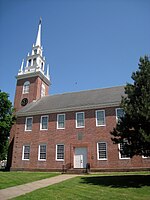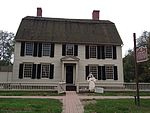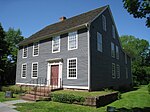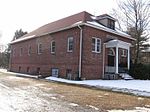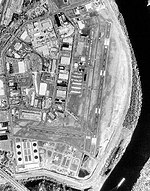William H. Putnam Memorial Bridge

The Putnam Bridge is a bridge in the state of Connecticut carrying the Route 3 Expressway over the Connecticut River, connecting Interstate 91 in Wethersfield and Route 2 in Glastonbury. It is the southernmost crossing of the Connecticut River in the Hartford Area and carries an average of 50,800 vehicles per day.[1]The bridge was built in the late 1950s as part of the Route 3 connector between Interstate 91 and Connecticut Route 2. It originally terminated at Main Street in Glastonbury, rather than at Route 2. It was expected to be expanded to a double-decker in the early 1970s as part of the planned Interstate 491, a southeastern bypass around Hartford from Wethersfield to East Hartford. However, the project was cancelled in 1973. In the late 1980s, the expressway portion of Route 3 was extended to terminate at Route 2. In 2013, the bridge underwent a $15 million rehabilitation project, which repaved the roadbed, repainted the girders, added new lighting fixtures and a new pedestrian walkway.
Excerpt from the Wikipedia article William H. Putnam Memorial Bridge (License: CC BY-SA 3.0, Authors, Images).William H. Putnam Memorial Bridge
CT 3,
Geographical coordinates (GPS) Address External links Nearby Places Show on map
Geographical coordinates (GPS)
| Latitude | Longitude |
|---|---|
| N 41.714166666667 ° | E -72.640833333333 ° |
Address
William H. Putnam Memorial Bridge
CT 3
06109
Connecticut, United States
Open on Google Maps

